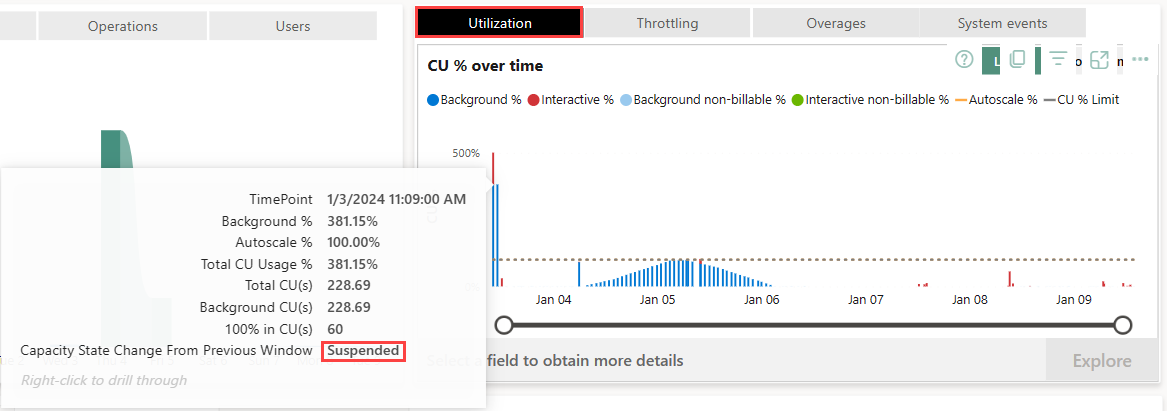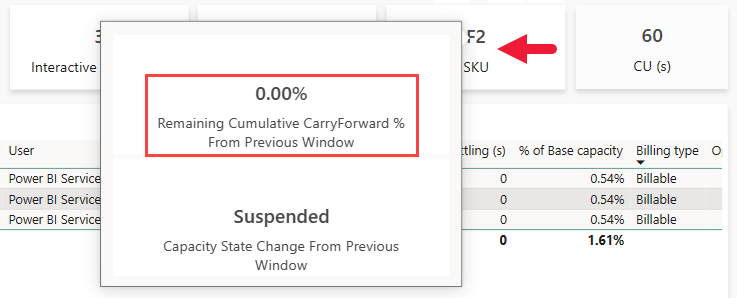Note
Access to this page requires authorization. You can try signing in or changing directories.
Access to this page requires authorization. You can try changing directories.
To monitor paused capacities, use the latest version of the Microsoft Fabric Capacity Metrics app.
View the paused capacity events
The system events table lists all the paused capacity events. Use this table to see when your capacity was paused and when it was reactivated. In the State column, a paused capacity is listed as Suspended, and a resumed capacity is listed as Active. Use the Time column to calculate the amount of time your capacity was active or paused.
Why is there a spike in the utilization chart when I pause my capacity?
To provide optimal performance, your capacity smooths usage over future timepoints. When you pause your capacity, the accumulated smoothed usage and any overages are converted to utilization and billed to you. As a result, a spike appears in the Utilization visual. If you have paused the capacity and are not able to view non-pause usage due to the scale of the pause, switch to the logarithmic view for better visibility.
When you hover over the spike, a tooltip shows the state of the capacity.

View carryforward operations
You can find the percentage of carryforward operations that your capacity had when it was paused.
Locate the paused capacity timepoint by reviewing the spike in the utilization visual.
Right-click the paused capacity's timepoint and drill through to the Timepoint Detail page.
Hover over the SKU card. A tooltip displays the remaining cumulative carryforward percent.

Considerations and limitations
When you pause a capacity, the timepoint of the paused capacity is displayed on the Timepoint page 30 seconds afterward. This timepoint includes all of your capacity’s reconciled consumption. If you have enabled capacity alerts you might receive a false alert that your capacity usage has exceeded the threshold you specified, after it was paused.
When you pause a capacity, the timepoint preceding the timepoint at which the capacity was paused is canceled and doesn't appear on the Compute page. For example, if you pause your capacity at 13:00:00, the 12:29:30 timepoint won't exist.
When you pause a capacity, after the Suspended event is shown, you may see an Active NotOverloaded event. The capacity is still paused. This occurs if your capacity was overloaded prior to the capacity being paused.